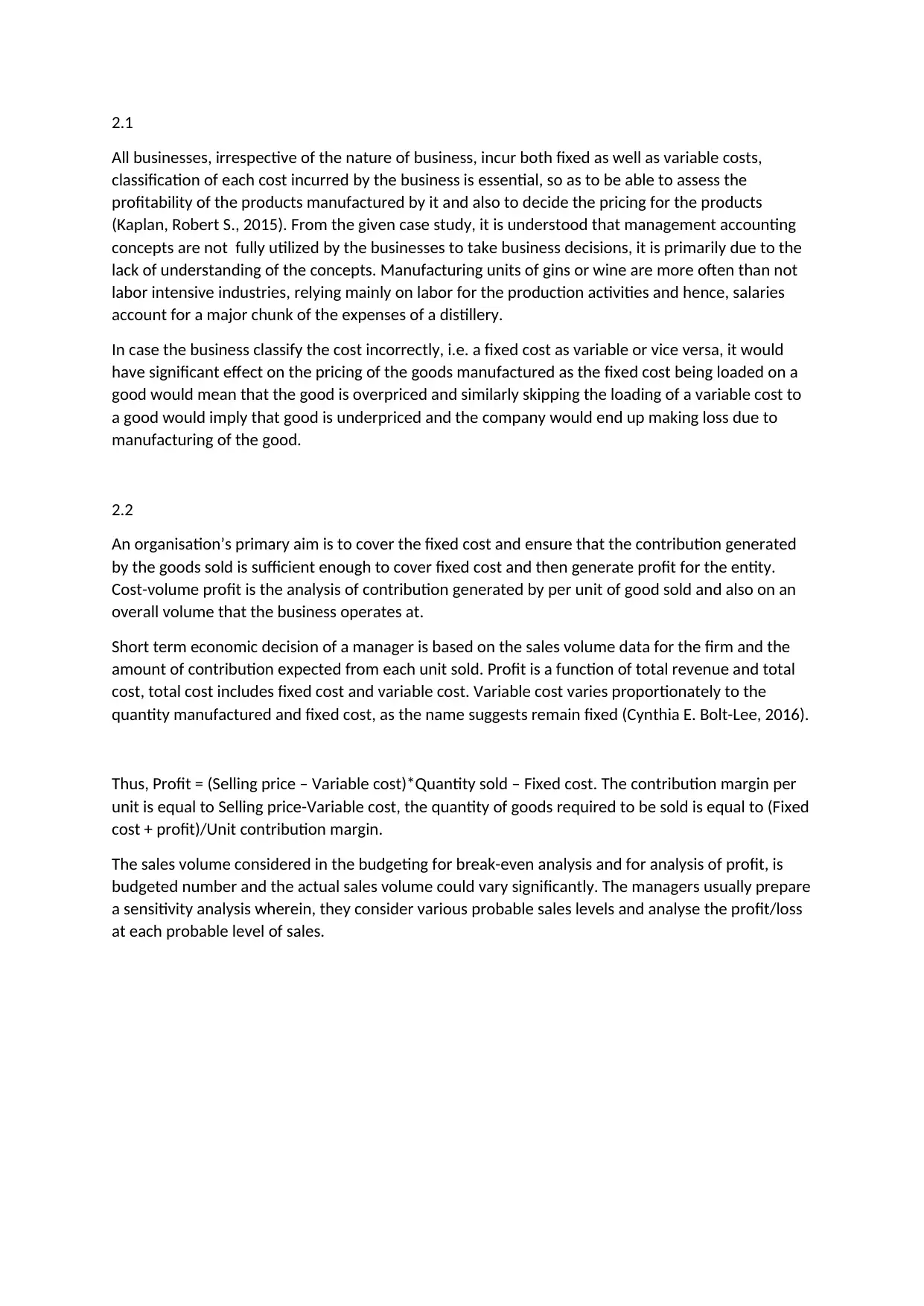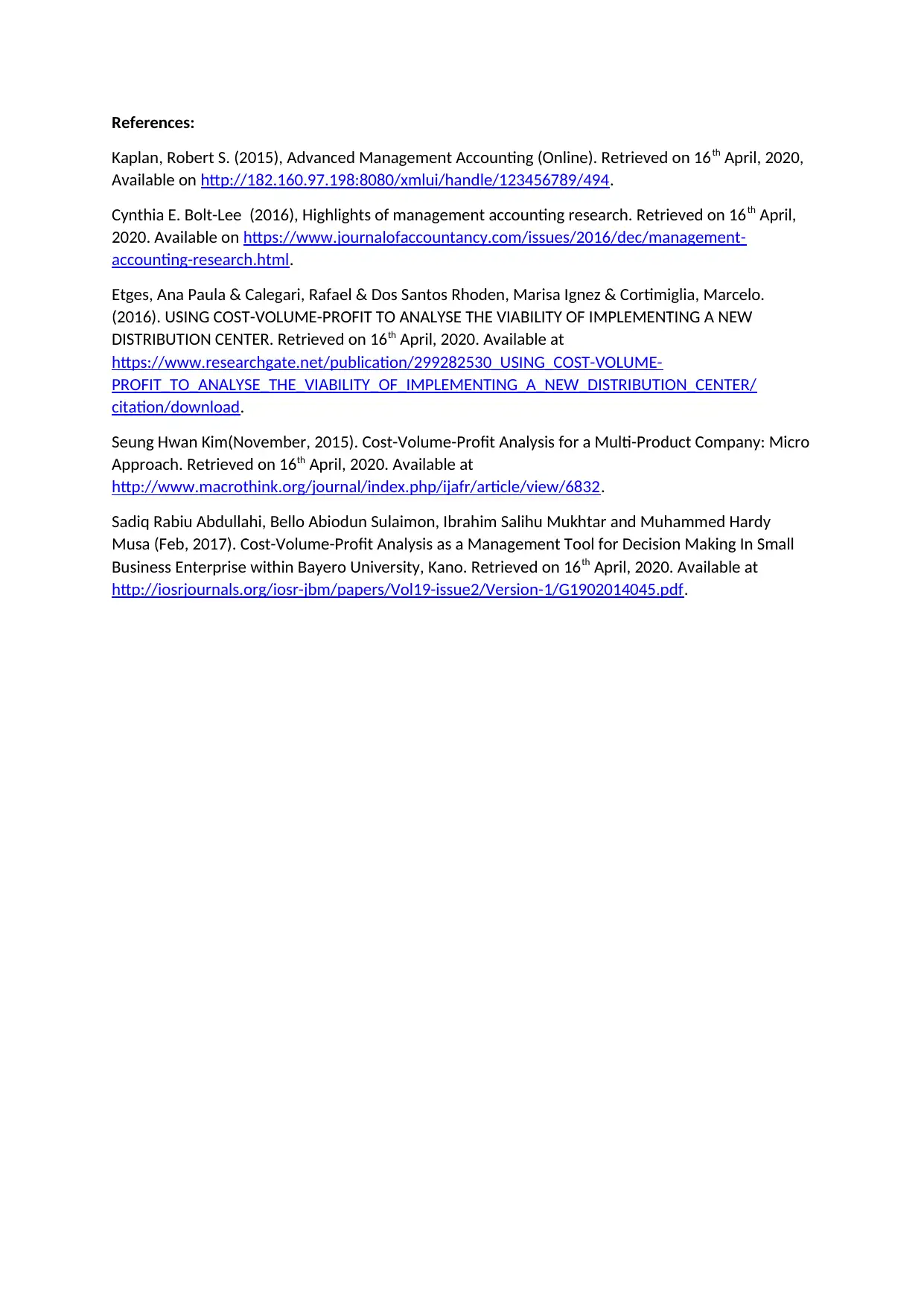Impact of Cost Classification on Profitability: A Detailed Report
VerifiedAdded on 2022/09/27
|2
|656
|23
Report
AI Summary
This report examines the critical role of cost classification in business profitability, emphasizing the distinction between fixed and variable costs. It highlights how accurate cost classification is essential for effective pricing strategies and financial decision-making, particularly within labor-intensive industries like distilleries. The report analyzes the cost-volume-profit (CVP) analysis, including break-even points and sensitivity analysis, demonstrating how businesses can use these tools to assess profitability, make informed decisions about sales volumes, and manage financial risks. It underscores the importance of understanding management accounting concepts to enhance business performance, supported by references to relevant academic research and industry publications. The report stresses the practical applications of cost classification in optimizing business operations and achieving financial goals.
1 out of 2






![[object Object]](/_next/static/media/star-bottom.7253800d.svg)